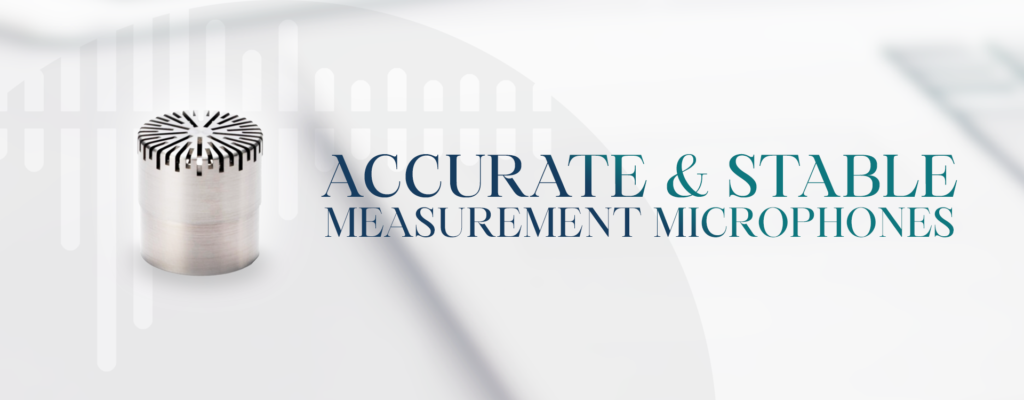PLACID Measurement Microphones
In our everyday life, microphones are utilized in all our electronic devices such as PC’s, smart phones, televisions, even in smartwatches. Through this guide, we will explain more about the PLACID microphones that are explicitly designed to be utilized in a complex environment that measures sound: measurement microphones.

MEASUREMENT MICROPHONES
PLACID Instruments BV is a research-oriented high-tech enterprise mainly engaged in the research and development of acoustic measuring equipment, acoustic engineering design, and acoustic vibration technology consulting. The company’s core business is the R & D and manufacture of acoustic measurement sensors, test systems, professional measurement microphones and vibration test sensors and systems.
Nowadays, this method brings values to a various range of measurement microphones for numerous applications from ultra-low to ultra-high sound levels over a very wide array of frequencies.
Microphone Physic setup
Measurement microphones are built on a basic corporal principle: the capacitance microphone.
Condenser microphones use two charged metal plates (a diaphragm and backplate) that form a capacitor. When soundwaves hit the mic’s diaphragm, they vibrate within the diaphragm, and the distance between the back plate and diaphragm impacts the voltage called capacitance.
Microphone Diaphragm
PLACID measurement microphones have numerous ranges of diameters from 1-, ½- and ¼ inch. The larger the diaphragm, the more sensitive it is and will have improved detecting capabilities for minor sound pressure differences.
A microphone diaphragm is a thin membrane that moves in reaction to external sound pressure variation. A microphone diaphragm is a key transducer component in converting acoustic energy into electrical energy. The three main diaphragm types are the moving-coil, ribbon, and condenser.
The size of the diaphragm will determine the frequency range that the measurement microphone can accurately measure.
Large diaphragms (1”) are very sensitive and can measure very low-level noise. Small diaphragms (1/4”) are designed for very high frequencies.
The most used measurement microphones are the ½” which are versatile and used in most normal day to day sound measurements.
The displacement of the diaphragm for a typical ½-inch microphone is only in the magnitude order of 5 nanometres for excitation of one pascal. For comparison, a diaphragm with a diameter the size of planet earth would barely move 5 meters
The wavelength of a 20 kHz sound wave (the upper limit of the audio range) is 1.7 cm.
Microphone Sensitivity
Microphone sensitivity is typically measured with a 1 kHz sine wave at a 94 dB sound pressure level (SPL), or 1 pascal (Pa) pressure. The magnitude of the analogue or digital output signal from the microphone with that input stimulus is a measure of its sensitivity.
Microphone Dynamic Range
The microphone’s dynamic range is the difference between the largest (max SPL) and smallest (noise floor) signals it can faithfully reproduce. For our most used microphone the PMP21, the dynamic range is 146 dB – 16 dB = 130 dB.
As these microphones require a preamplifier to be able to transfer the signal to a Data Acquisition unit or a sound analyser, most often the noise floor will be determined by the self-noise of the preamplifier rather than from the microphone.
Microphone Sound Field
Measurement microphones, by their various specifications, effect the sound pressure. This impact, depending on the category of the sound field, is reflected in each microphone’s specifications and its measurements are enhanced to compensate for the effect. This let us provide a flat measurement to the selected sound field.
Measurement microphones are categorized into three main categories, each type is enhanced for one of the three main categories of sounds field, and it is vital to select the microphone that is appropriate for the sound field.
Free-field
The free field microphone measures the sound pressure value when the sensor is not in the sound field. At high frequencies, the sensor itself can affect the sound pressure test. This type of sensor has been designed with compensation for its effect on the sound field.
For most sound pressure tests, we choose free-field microphones, which are used in sound level meters and sound power arrays.
Free-field microphones are frequently utilized to measure environmental sound (outdoors) and from loudspeakers.
Diffuse-field
A diffuse sound field means that no matter at which location you measure the sound level (i.e. in a reverberation chamber) the sound level will be the same level.
The sound will come from all directions the same level.
Practical applications for diffuse-field microphones are building acoustics and interior measurements (for example car interior, train cabin etc.) and generally reverberant spaces.
Pressure-field
The pressure field microphone measures the sound pressure on the sensor diaphragm. Practical applications are in closed coupling cavities, or in walls and solid boundaries. In this case, the sensor forms part of the wall and the measured sound pressure is also the value of the sound pressure on the wall.
Pressure-field microphones are utilized in acoustic couplers, wind tunnels or in flush-mounted measurements.
Microphone Stability
PLACID Instruments measurement microphones are very stable, particularly over time, and independent of temperature, humidity, and ambient pressure.
To maximize stability, we use wisely chosen, high-quality material; we apply precise treatment to create a microphone that will be stable over a long period of time. Of course, each microphone is constantly monitored and tested during the manufacturing process.


